Best camping knives: folding knives for wild expeditions
Having the best camping knife is crucial if you're spending time in the backcountry, whether at camp or on the trails
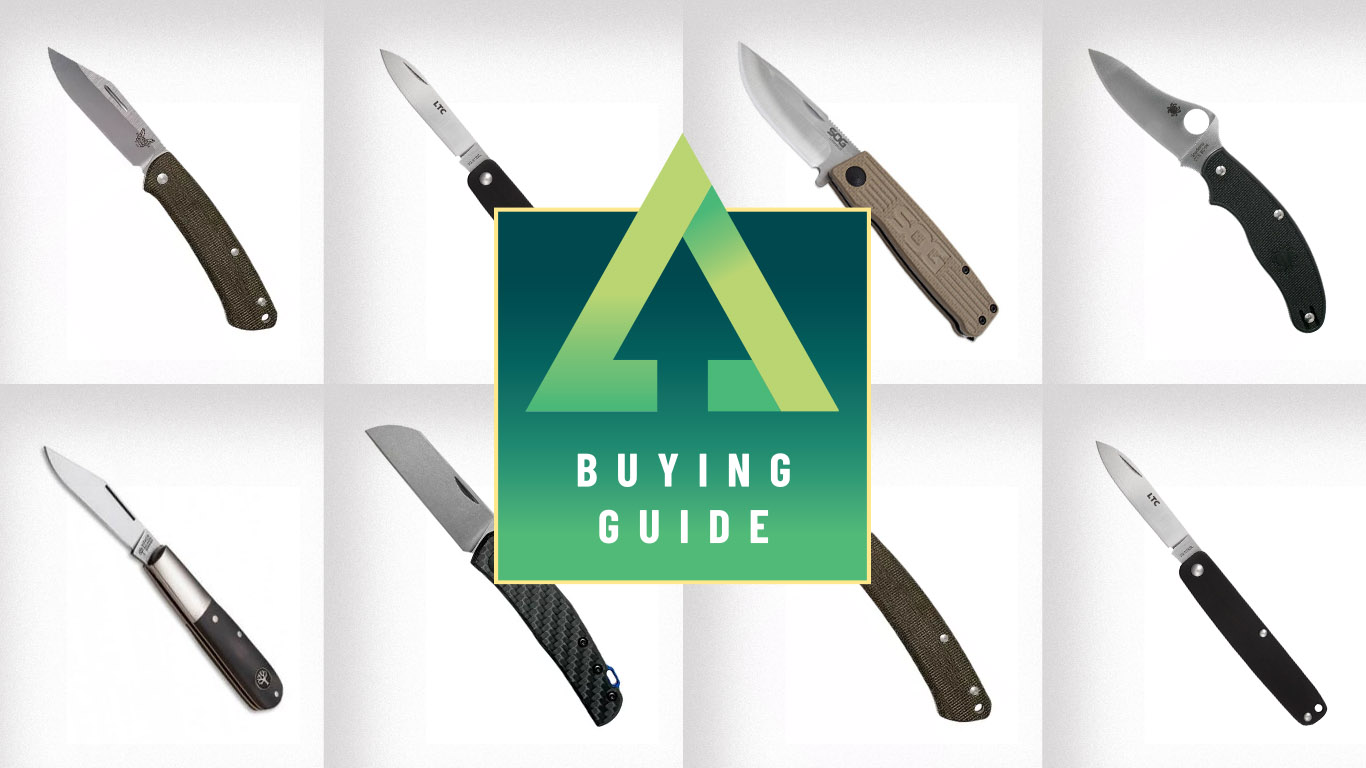
The best camping knife has myriad uses, particularly on backcountry camping expeditions and the like. These small, folding, compact yet mighty tools are a far cry from the kind of massive blades wielded by a Crocodile Dundee character and are all the more useful for it.
A quality camping knife is a great tool to have when cooking up a campsite feast, slicing food packets open, chopping veg, carrying out repairs to your tent or hiking gear, or as an addition to your first aid kit. You get the picture, it's an almost indispensable tool that we've turned to time and time again during our many years of camping adventures.
What sets the best camping knife apart from, say, the blade on best multitool? Surely just carrying the one tool is preferable to two? Well, we'd argue there's a place for both in your backpack, particularly as they're both so compact. The best camping knife will usually have a superior blade to that of your multitool, which makes them the go-to for campsite cooks.
We've tested the knives in this selection over countless expeditions and rate the Three Rivers Atlas to be the best camping knife around, thanks to its low weight, excellent blade steel and build quality.
The best camping knives
You can trust Advnture
Best knife for fast and light expeditions
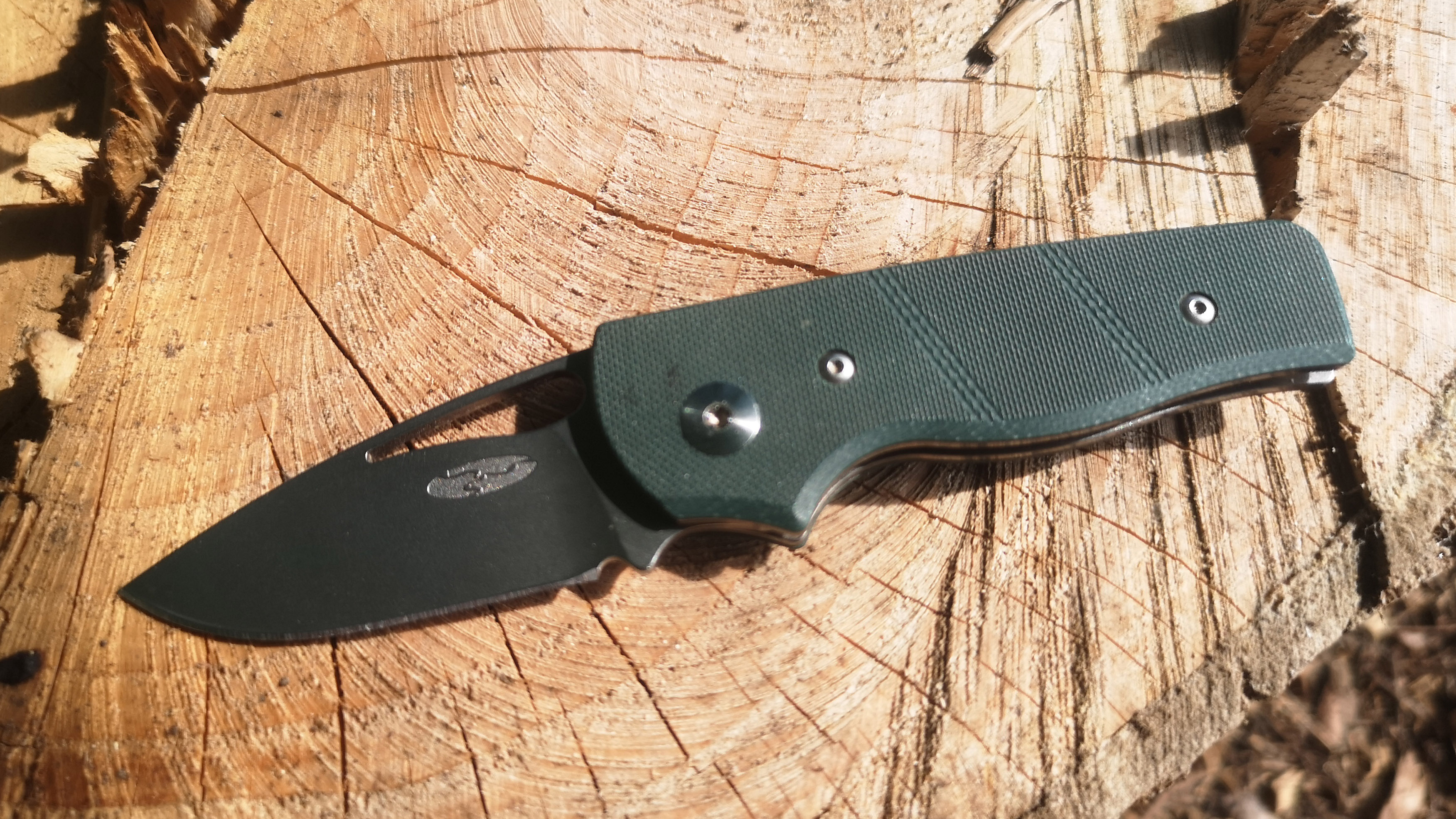
Specifications
Reasons to buy
Reasons to avoid
The Atlas is a compact US-made slipjoint folder from TRM (Three Rivers Manufacturing), a small but fast-growing knifemaker from Massachusetts. It is a clean and well-thought-out design with a stubby but very slicey blade made from high-end S35VN steel. It’s a serious knife despite its compact dimensions, and one that is built for hard work. The blade also has an enlarged cut-out that can allow for one-handed opening, enabling quicker deployment. We liked the way the handle fits snugly in the hand, incorporating a finger choil and slimmed down rear end for added comfort and dexterity.
Spine jimping also adds to an overall sensation of firm, reliable control in use, whether we were cutting cordage or whittling wood. Similarly, the very positive blade half stop feels reassuringly safe, and there is ideal tension on the backspring that means the blade snaps open and closed securely.
Read our full Three Rivers Atlas camping knife review
Best camping knife for those on a budget
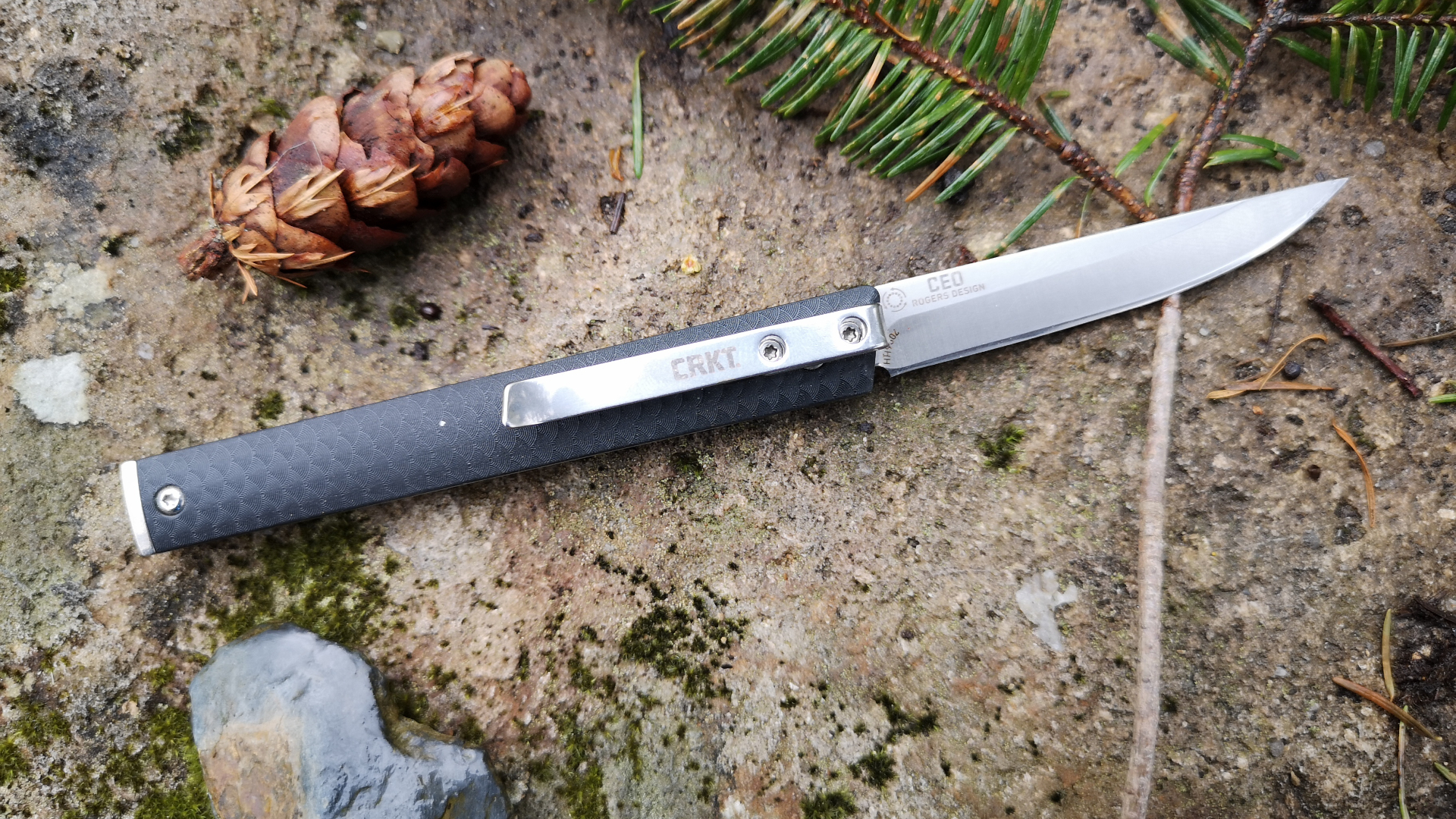
Specifications
Reasons to buy
Reasons to avoid
With its understated yet considered design, this slim and elegant knife aims for precision and simplicity in terms of both aesthetics and purpose. On test, we found it delivers on both counts – the knife feels well-balanced in the hand, while lubricated ball bearings in the pivot reduce friction so that the satin-finished, stainless-steel blade clicks smoothly and crisply into place.
The long, thin blade has a high flat grind that is well suited to prepping food for camp cooking or taking on small whittling projects. Meanwhile, its low weight, compact folded dimensions and thin profile make it easy to carry in a pocket or slip into the side pouch of a rucksack. The secure carry pocket clip ensured it stayed firmly in place throughout our test period. Given its premium look and feel, it also offers good value at this price.
Read our full CRKT CEO Heinnie Haynes Edition review
Best knives for steel-blade perfection
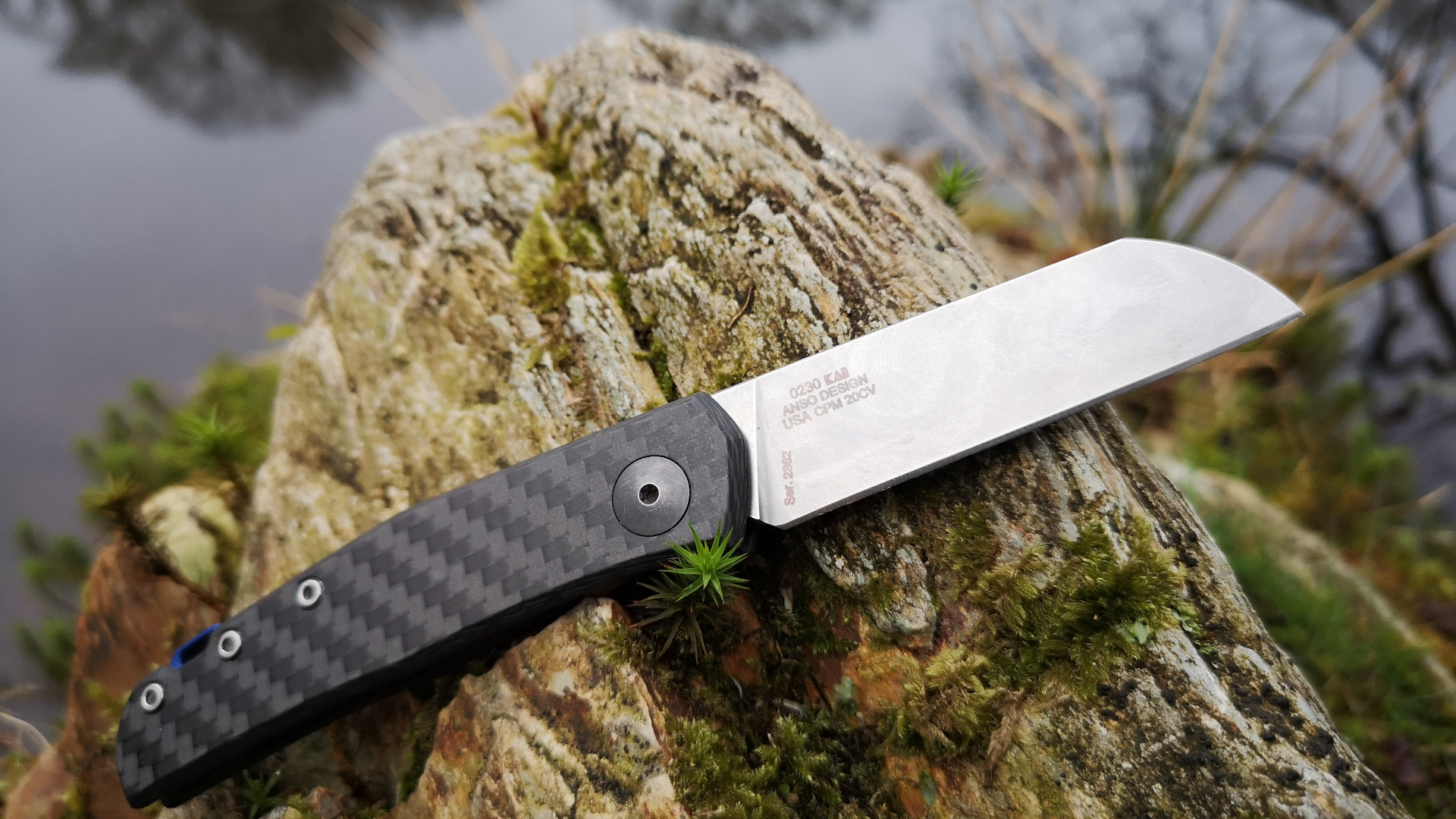
Specifications
Reasons to buy
Reasons to avoid
This sleek, minimalist and ultra-modern slipjoint knife has serious pocket appeal. It is incredibly light, thanks to the use of carbon fibre scales, and we think it's also very handsome. Black oxide steel hardware, a stonewashed blade finish and a blue anodised aluminium backspacer complete the package. On test, we found it to be extremely well balanced and it sat comfortably in the hand, with a crisp action and a double detent system with a half-stop.
The blade is a Wharncliffe or sheepsfoot style with a full-width flat grind that allows precise, controlled cutting – ideal for all sorts of outdoor utility work. It uses CPM 20CV, a much-coveted ‘super steel’ with exceptional wear and corrosion resistance, not to mention excellent edge-holding ability. Real-world performance is hugely impressive: it keeps a sharp edge even after putting it through some serious hard work.
Read our full Zero Tolerance 0230 Jens Anso review
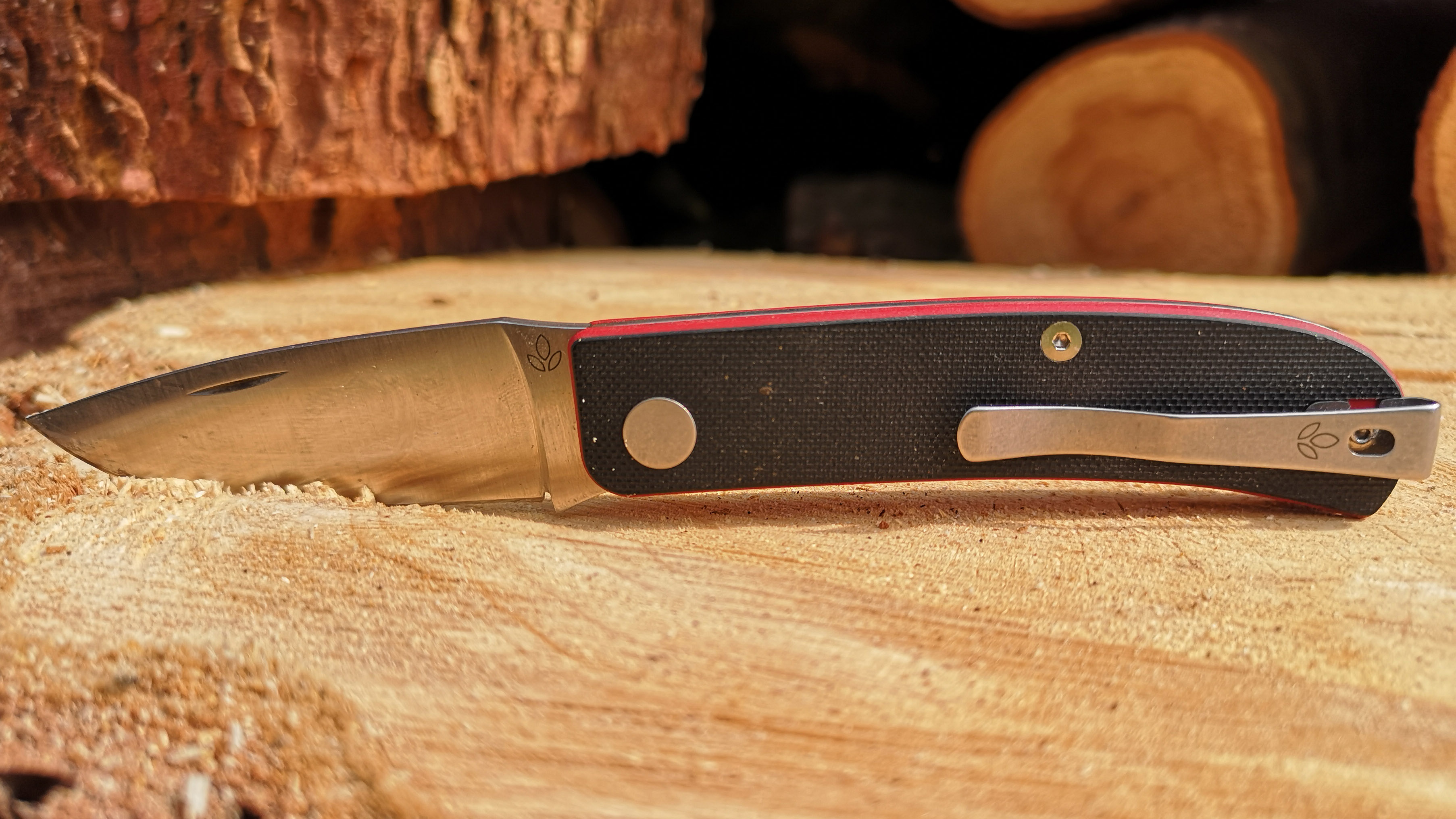
Specifications
Reasons to buy
Reasons to avoid
The Manly Wasp is a tough and practical knife that offers superb value for money. It comes in two versions – one with a 14C28N steel blade, the other with premium S90V steel. 14C28N is a stainless steel from Sandvik that is basically a more corrosion resistant version of their well-known 13C26 steel. Despite not carrying the cult appeal of S90V, it is still an impressive mid-range steel that sharpens to a razor edge.
The handle scales of both versions are solid and chunky G10 fibreglass composite, finished with a repositionable deep carry clip. We found it ideally suited to hard outdoor use, handling all sorts of general outdoor tasks with aplomb on test. The slipjoint mechanism features three blade stops, so it’s extremely unlikely that the Wasp will close on your fingers, though it doesn’t make for quick deployment. That quirk aside, there is little not to like about this compact but highly capable knife.
Read our full Manly Wasp review
Best small penknife
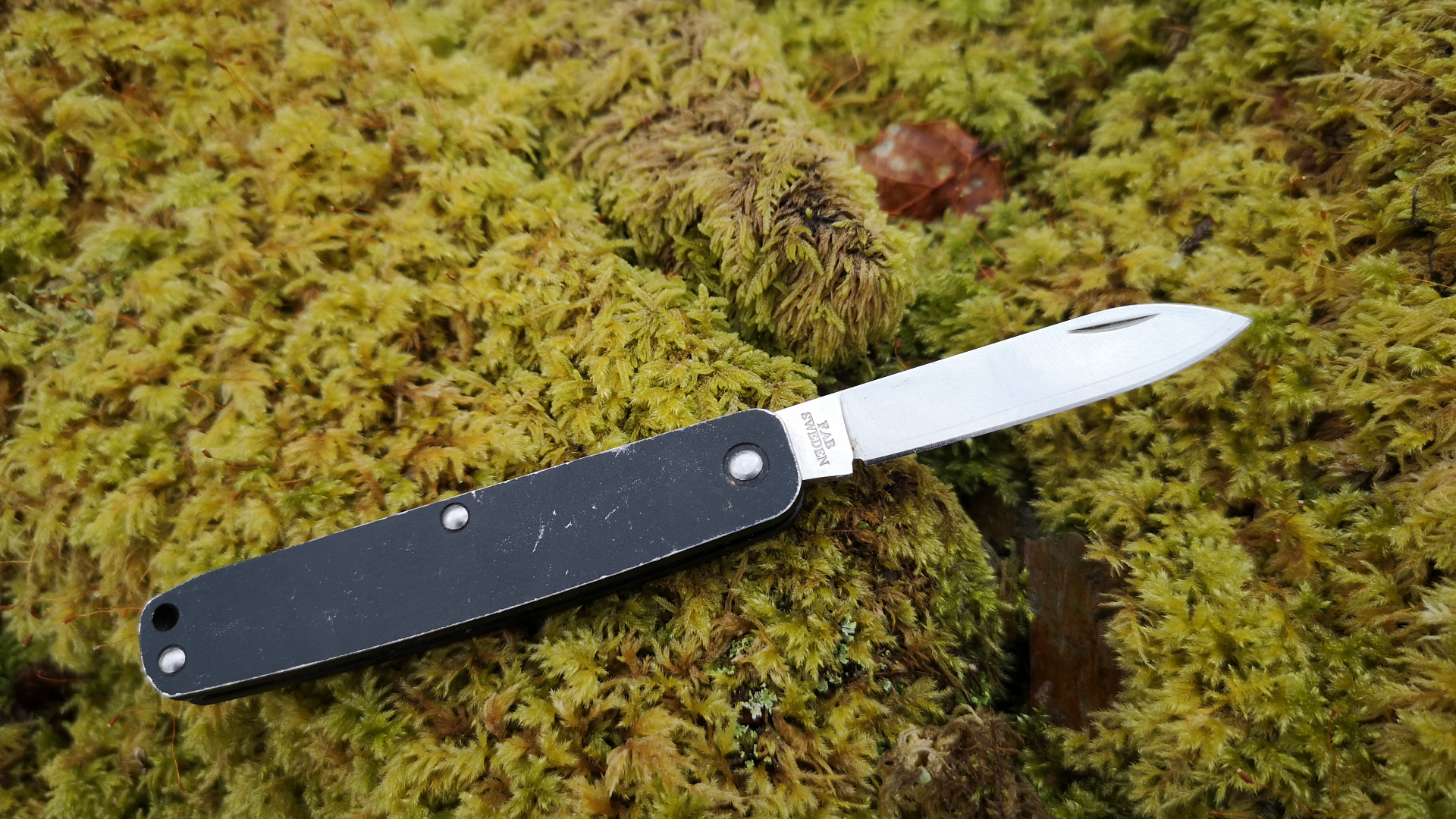
Specifications
Reasons to buy
Reasons to avoid
Swedish knifemakers Fällkniven are renowned as one of the outdoor knife brands. But the LTC (Legal to Carry) is a little different from their other offerings, which are mostly designed for hunting, bushcraft/survival and military/tactical applications. Instead, this is a small but supremely well-built penknife, made to sit unobtrusively in a trouser pocket.
The blade is short and narrow, but is forged from the brand’s premium laminate powder steel, 3G. As such, it comes wicked sharp straight out of the rather attractive wooden box that it is packaged in, and though the blade doesn’t lock, it has a stiff backspring plus nail nicks on both sides that make it useable for both right and left handers. We loved the way, for such a compact knife, it cuts extremely efficiently.
Read our full Fällkniven LTC review
The best clip-point blade
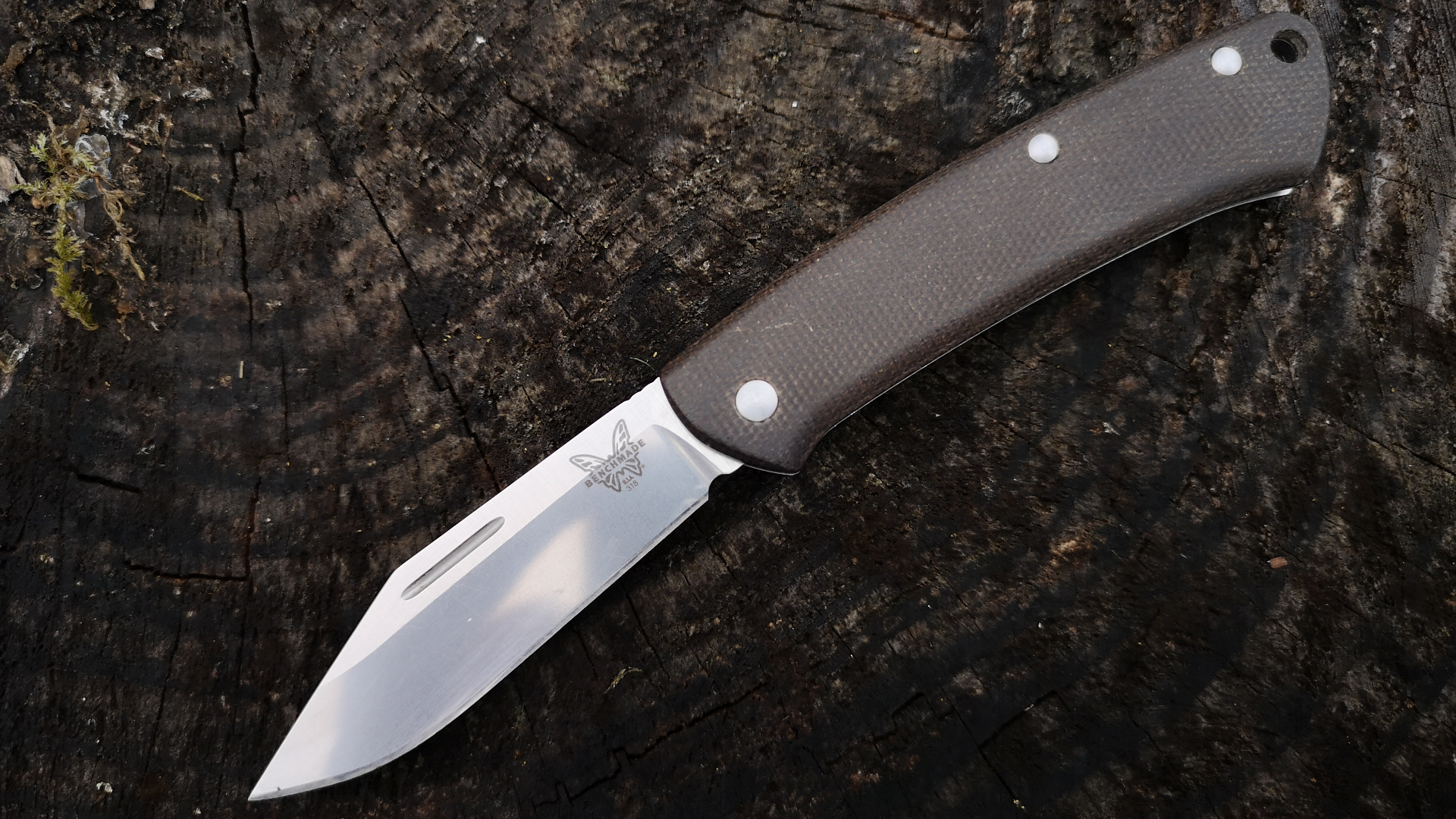
Specifications
Reasons to buy
Reasons to avoid
The Benchmade 318 Proper is a contemporary take on the traditional pocket-knife, with a Barlow-style clip point blade and mottled green scales that soon take on a weathered patina, despite being made from modern Micarta. Similarly, though the blade has an unmistakeable classic silhouette, the steel is a bang up to date CPM S30V.
Widely regarded as being among the best all-round high-end stainless knife steels available, S30V is known for its excellent edge retention and corrosion resistance, while also balancing hardness and toughness. This makes the Proper 318 a premium knife with impressive capabilities, which is reflected in the price. But it is made in the USA and we found it to be an undoubtedly classy blade on test. If you can afford to splurge, you won’t regret it.
Read our full Benchmade Proper 318 Clip-point Micarta review
The best camping knife for classic looks
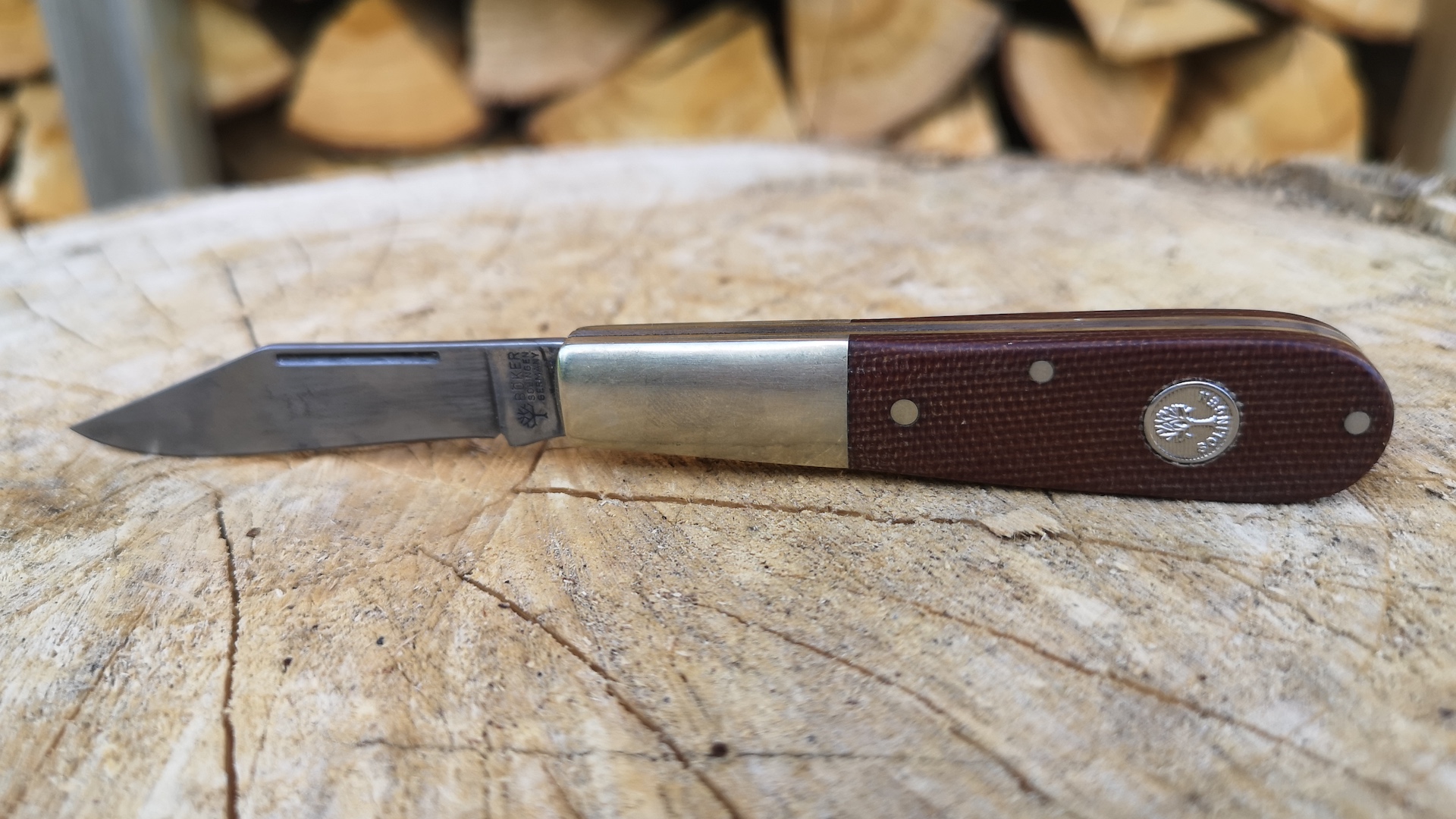
Specifications
Reasons to buy
Reasons to avoid
With its rounded handle and long metal bolsters, this knife possesses all the classic features of a traditional Barlow pocket-knife. As such it will appeal to outdoors lovers who appreciate heritage kit. This particular model boasts nickel silver bolsters, natural canvas micarta scales and a clip-point blade made from O1 steel. This is a basic carbon steel that sharpens easily and is relatively tough, developing an appealing patina over time. We found it needs a little more care and attention than stainless steel versions in order to prevent rust though.
In use, the knife has a reassuringly stiff backspring with a pronounced half-stop for safety. It’s a knife designed for deliberate, leisurely use rather than quick deployment. If that’s also how you like to enjoy the great outdoors – we’re thinking relaxed camping weekends in the countryside rather than ultralight mountain missions – you’ll doubtless appreciate the old-world charm of this handsome knife.
Read our full Böker Barlow O1 review
Best knife for one-handed operation
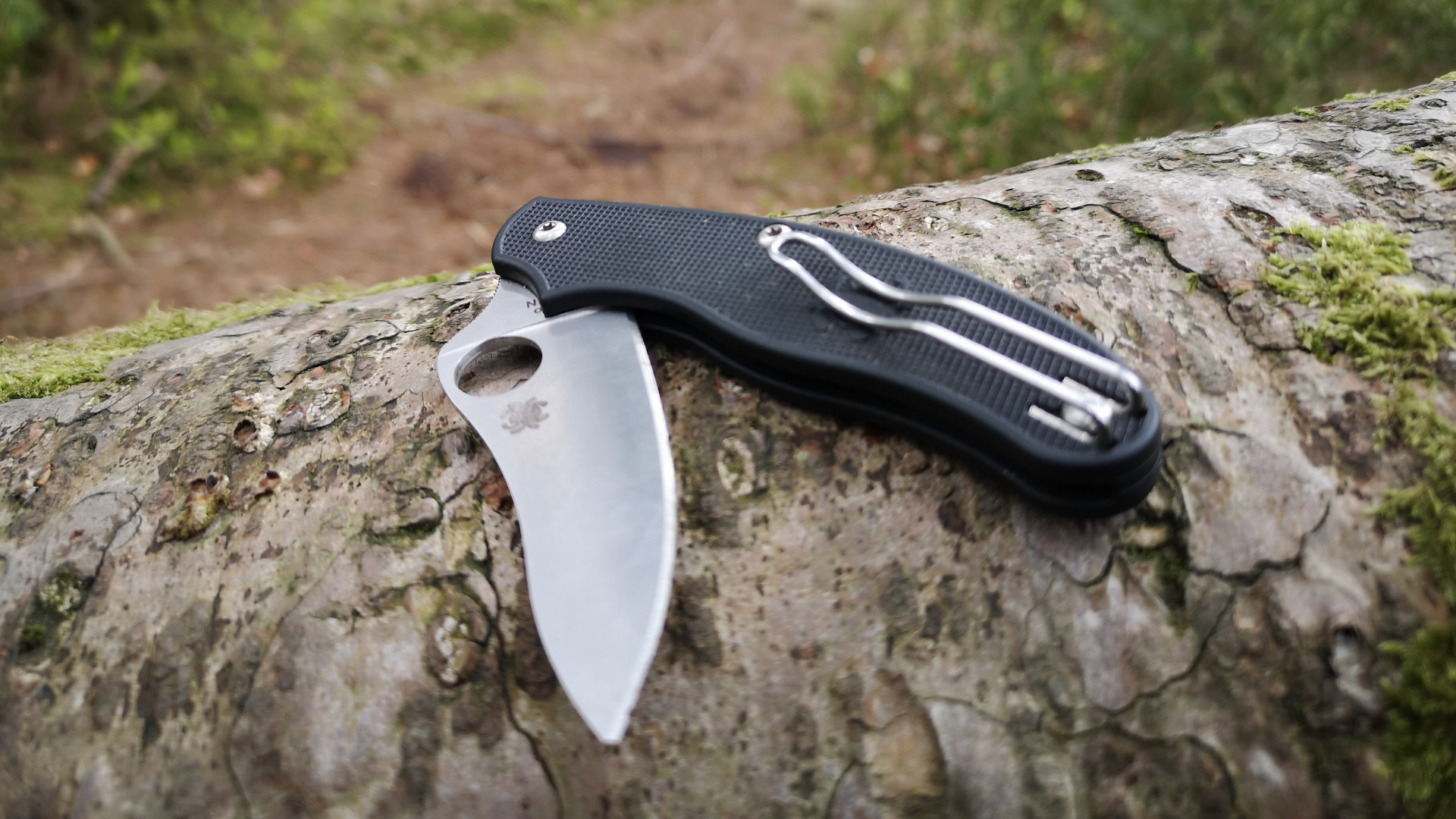
Specifications
Reasons to buy
Reasons to avoid
US brand Spyderco has built a great reputation among outdoor users for its range of folding pocket-knives. The UK penknife (UKPK) is one such example, which was specifically developed to comply with UK knife laws for everyday carry. There are plenty of other reasons for its popularity too though. While it’s not the most graceful knife – the design certainly prioritises function over aesthetics – we found the ergonomic design fits superbly well in the hand.
We liked how the shaped choil for the forefinger and the upper thumb ramp make it very precise when used for both fine and coarser cutting tasks. The leaf-shaped drop point blade is a versatile shape that adapts well to a multitude of uses, and the CTS BD1N alloy is a US-made stainless steel that balances hardness, edge retention and resistance to corrosion. It’s often used in quality cutlery, so this is a great knife for all sorts of camp cooking jobs.
Lastly, this knife feels very safe and secure for a non-locking folder, thanks to a stiff backspring and a half stop that catches the blade at 90 degrees.
Read our full Spyderco UK Penknife Drop Point (UKPK) review
Best camping knife for comfortable use
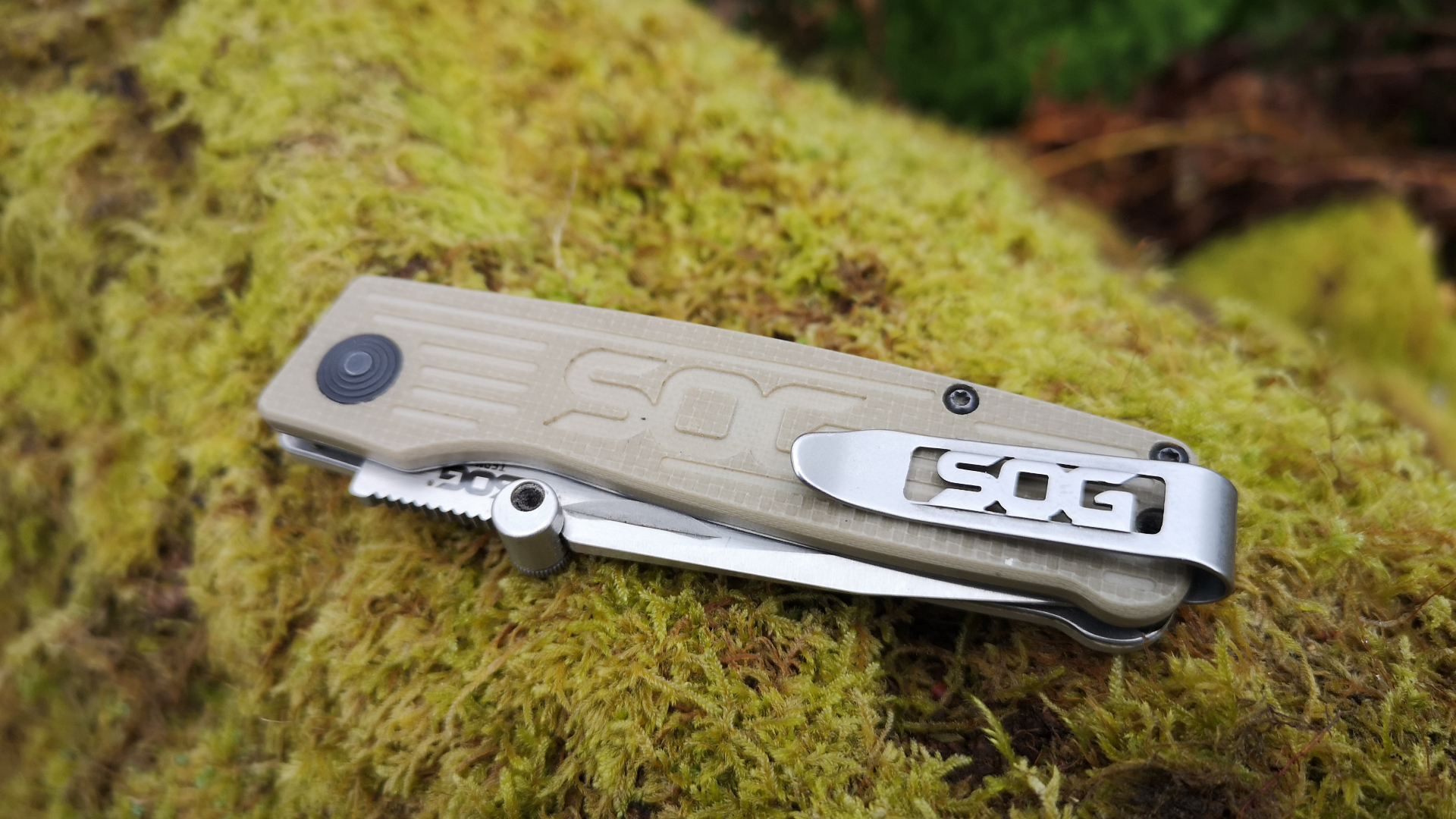
Specifications
Reasons to buy
Reasons to avoid
With a reputation for producing hunting, survival and military-tactical knives, as well as highly-regarded multitools, SOG is a brand that you might not turn to when looking for a discreet folder for camping, everyday carry and general outdoor use. But we found the Terminus to be a well-made, well-designed knife that utilises a Carpenter CTS-BD1 steel blade, offering reasonable edge holding and easy sharpening.
The blade has a tapered drop point, plenty of belly up front and a straight edge behind. The hollow grind makes for a versatile blade with an easy cutting action. Blade centring is good, with little play.
The G10 laminate fibreglass scales feel tough and durable in the hand, forming a solid, chunky handle that will work even for those with large hands. The texturing and grooved pattern on the scales is also excellent, providing secure grip and inspiring confidence, as does the pronounced jimping for the thumb on the spine of the blade.
Read our full SOG Terminus Slipjoint Satin review
Best camping knife comparison table
| Knife | RRP | Weight | Blade length | Features |
| CRKT CEO Heinnie Haynes Edition | $55 (US) / £40 (UK) | 57g/2oz | 7.4cm / 3in | Pocket clip / Flat grind / Drop point blade |
| Three Rivers Atlas | $142.50 (UK) / £136 (UK) | 60g /2.1oz | 5.7cm / 2.25in | Flat grind / Drop point blade |
| Zero Tolerance 0230 Jens Anso | $245 (US) / £179 (UK) | 55g / 2oz | 6.8cm / 2.67in | Full flat grind / Wharncliffe blade |
| Manly Wasp | £41.95 (UK) | 80g /2.8oz | 7.5cm / 3in | Flat grind / Drop point blade |
| Fällkniven LTC | $82.95 (US) / £60 (UK) | 33g / 1.16oz | 5.9cm / 2.32in | Flat grind / Spear point blade |
| Benchmade Proper 318 Clip-point Micarta | $170 (US) / £163 (UK) | 60g /2.1oz | 7cm / 2.75in | Flat grind / Clip point blade |
| Böker Barlow O1 | $170 (US) / £71.95 (UK) / €81.95 (EU) | 51g / 1.8oz | 6.5cm / 2.55in | Flat grind / Clip point blade |
| Spyderco UK Penknife Drop Point (UKPK) | $110 (US) / £79 (UK) | 98g / 3.5oz | 7.5cm / 3in | Flat grind / drop point blade |
| SOG Terminus Slipjoint Satin | $90 (US) / £66 (UK) | 83g / 3oz | 7.5cm / 3in | Hollow grind / Drop point blade |
How we test the best camping knives
Our reviewers test camping knives in multiple settings and for myriad used. We test them during backcountry expeditions, camping trips and day hikes, using them to prepare food, whittle wood and repair kit, among other tasks. Specific features (including comfort, grip, materials used, cutting ability, portability and folding mechanism) are tested against claims made by the brand, and we assess factors such as durability, environmental impact and value for money.
Meet the testers
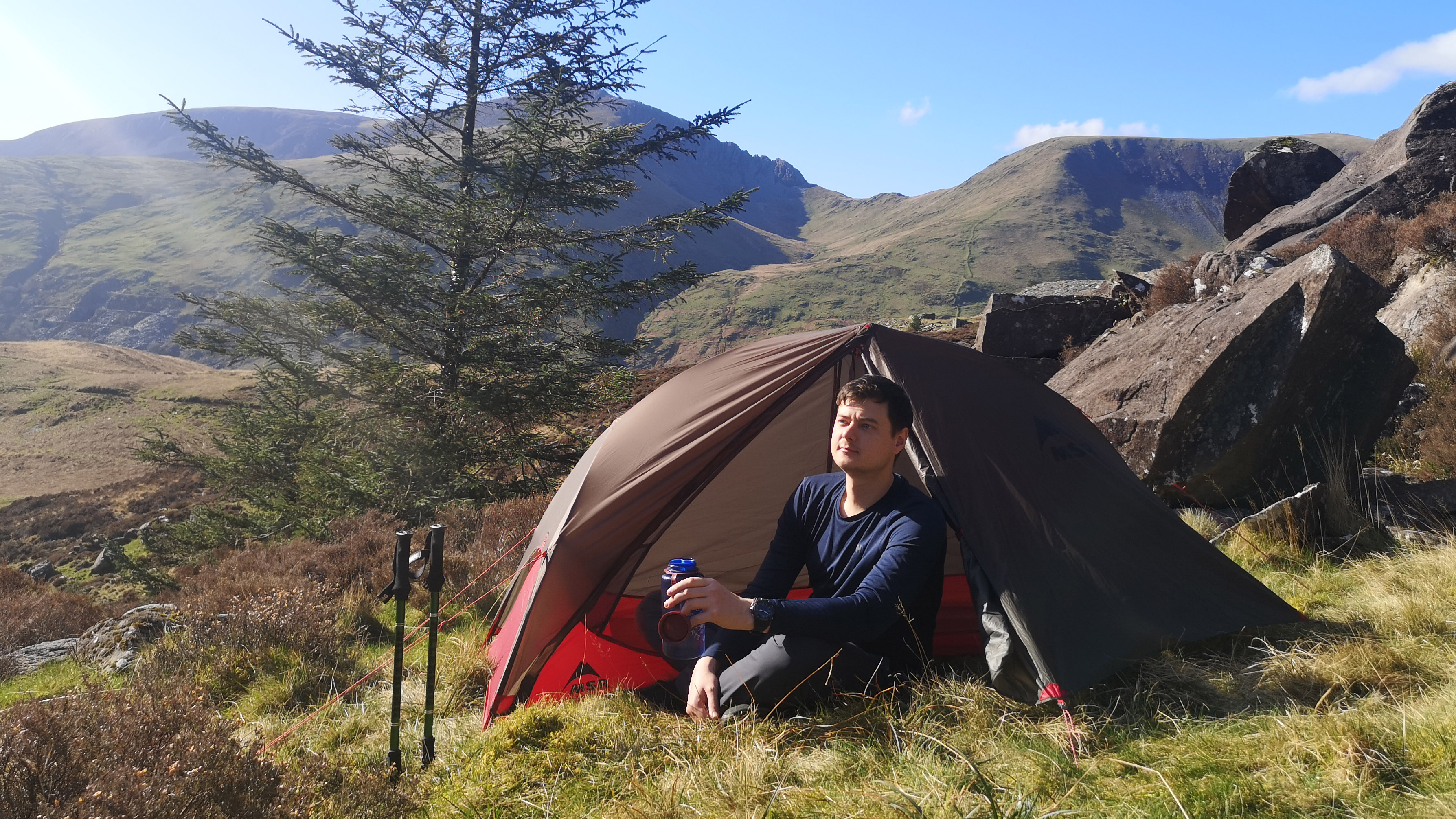
An outdoors writer and editor, Matt Jones has been testing kit in the field for nearly a decade. Having worked for both the Ramblers and the Scouts, he knows one or two things about walking and camping, and loves all things adventure, particularly long-distance backpacking, wild camping and climbing mountains – especially in Wales. He’s based in Snowdonia and last year thru-hiked the Cambrian Way, which runs for 298 miles from Cardiff to Conwy, with a total ascent of 73,700 feet – that’s nearly 2½ times the height of Everest.
Choosing the best camping knife for you
What constitutes the best camping knife for you will depend on a various factors – most importantly, when, where and how you intend to use the tool.
In this round-up we’ve focused on compact, non-locking folding knives, which are useful but still lightweight and give you more than enough cutting power to perform simple tasks in camp or on the trail, which combined with their multi-use qualities, makes them a real hiking essential and a great addition to your first aid kit.
Such knives are also legal as everyday carry in countries and states where knife laws are relatively strict, such as the United Kingdom. However, you should check the relevant legislation in your country if this is a concern.
When considering what would make the best camping knife for you, think about things such as the folding mechanism, and the quality and feel of the handle. Most importantly, though, decide which kind of blade will work best for your intended purpose, factoring in the following features.
Don't forget that a camping knife and a quality multitool together will cover all bases on your backcountry missions. There are so many uses for a multitool that, while a camping knife will do certain things better, having a tool along as well is often a good idea.
Below are some crucial considerations when buying a camping knife, as well as some frequently asked questions.
The best camping knife: blade steels
The blade will define the usefulness of any knife, and the quality of the steel used in its composition largely determines the quality of the blade. Various components can be used in steel alloys, which will affect a blade's strength, durability, sharpness and functionality.
High carbon steel is both easy to sharpen and holds an edge effectively, which are two qualities you'll really appreciate in a knife. As well as this, you can also use this kind of blade with a flint or charcloth to spark a campfire to life.
If you're intending to use your knife to do a spot of whittling, you'll need a higher quality blade than if you're just going to be chopping tomatos and chicken breasts. If your blade does start to look a little burred, blunt, or worn check out our guide on how to sharpen a camping knife.
For more rigorous tasks, you might want an axe blade, such as the lightweight option of the SOG Camp Axe. This is ideal for whittling wood, chopping kindling or hammering in tent stakes.

The best camping knife: blade shapes
Knife blades come in myriad shapes, some of which are ideal for specific tasks.
When it comes to pocket-knives, the most common types include Drop Point, which is an elegant blade with a convex curve. A drop point blade is easy to sharpen and perhaps the best for camping trips. All in all, it's a good all-rounder).
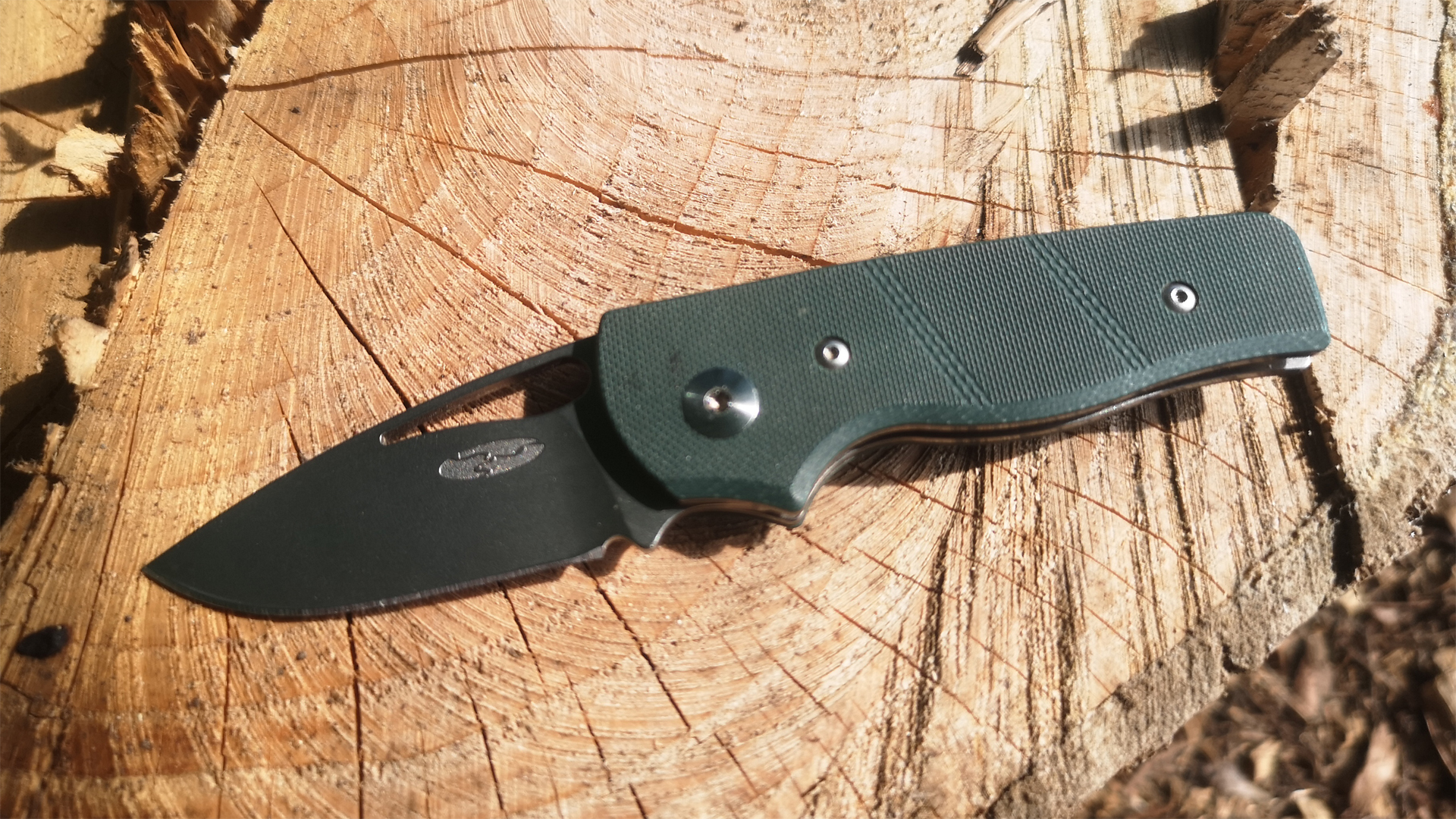
A Straight Back blade has a classic ‘kitchen knife’ shape, good for all cutting and slicing tasks, as well as piercing.

Clip Point blades have a traditional aesthetic and are good for precision cutting. The blade's spine has a downward sweep, creating a very distinctive point.

A Tanto blade is distinctive, with two angled cutting edges and a strong tip that's well suited for piercing. There are no rounding edges, making this an angular looking tool.
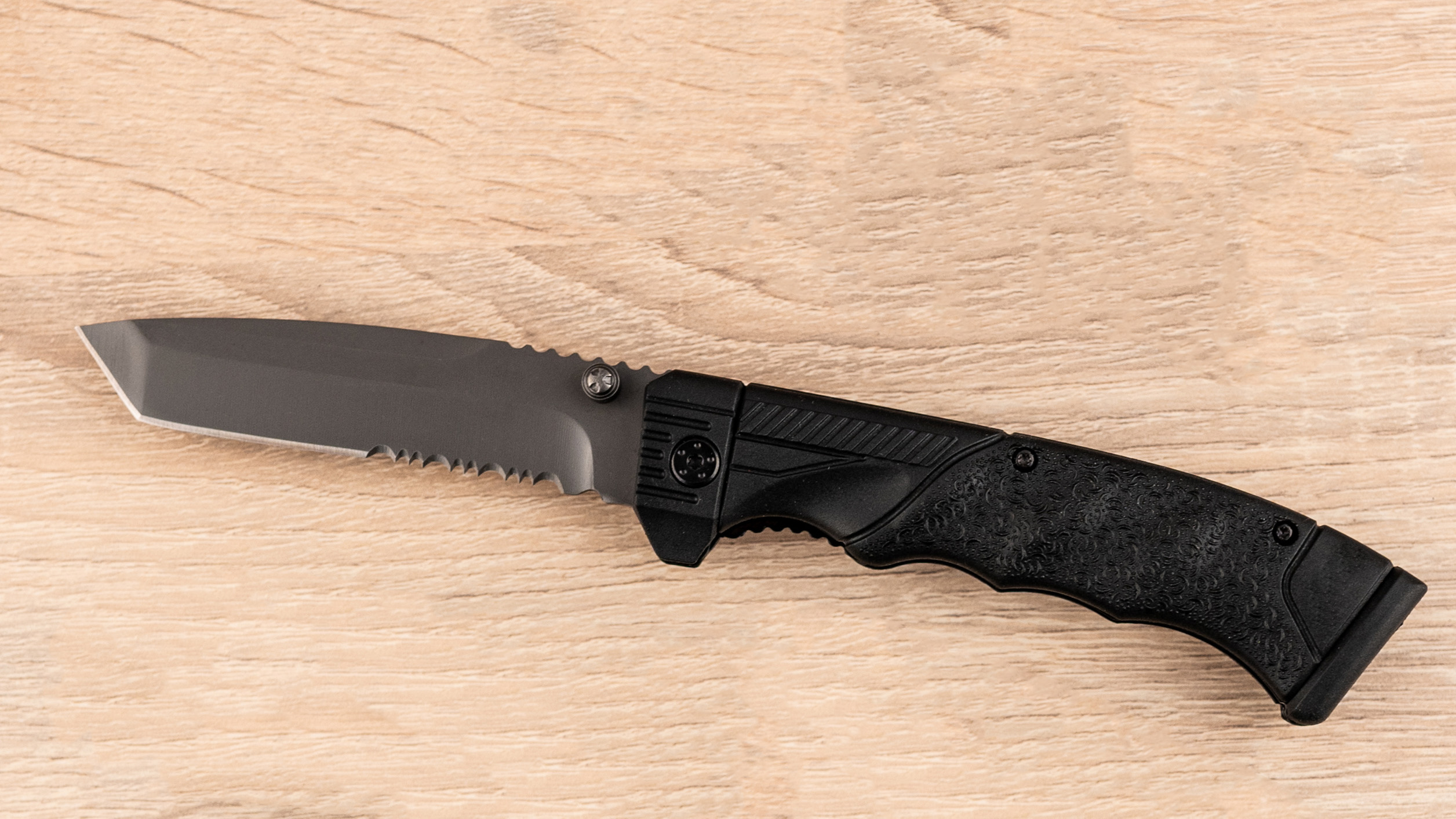
A Spearpoint has a distinctive symmetrical blade profile, ideal for slicing and cutting, though it's dagger-like character means that both sides are sharp, making it less ideal for camping than other varieties.

A Sheepsfoot blade is a ‘safe’ blade with a straight cutting edge, ideal for a multitude of tasks. Meanwhile, a Wharncliffe is a version of the sheepsfoot, offering excellent precision and control.

The best camping knife: grinds
The grind dictates how the cutting edge of a knife looks and performs. For pocketknives, the most common grinds are Flat grind (with a triangular profile that tapers from the spine towards the tip, making it very strong), Scandi grind (classic bushcraft blade, ideal for carving and splitting wood), Hollow grind (traditional concave blade with a very thin cutting edge, ideal for slicing and precision work). Chisel grind (bevelled on one side, good for slicing and very useful for those camping meals), and Convex grind (rounded towards the cutting edge).
How do I store my camping knife the right way?
You've got back from a great trip and you've cleaned your camping knife. Now, it's time to store correctly it until the next adventure. Storing your knife properly will help it reach its maximum lifespan potential, avoiding problems like rust or the blunting of the blade.
Store your knife in a cool, dry and contained space where it won't be banging into any other hard objects. It's important to keep it away from sunlight, which can give rust a helping hand, while the "dry" in the previous sentence is also crucial for this very reason. Obviously, make sure your knife is out of reach of children.
A really good option is to get a dedicated knife bag or a protective case with a knife-shaped slot surrounded by soft, accommodating foam.
How do I sharpen my camping knife?
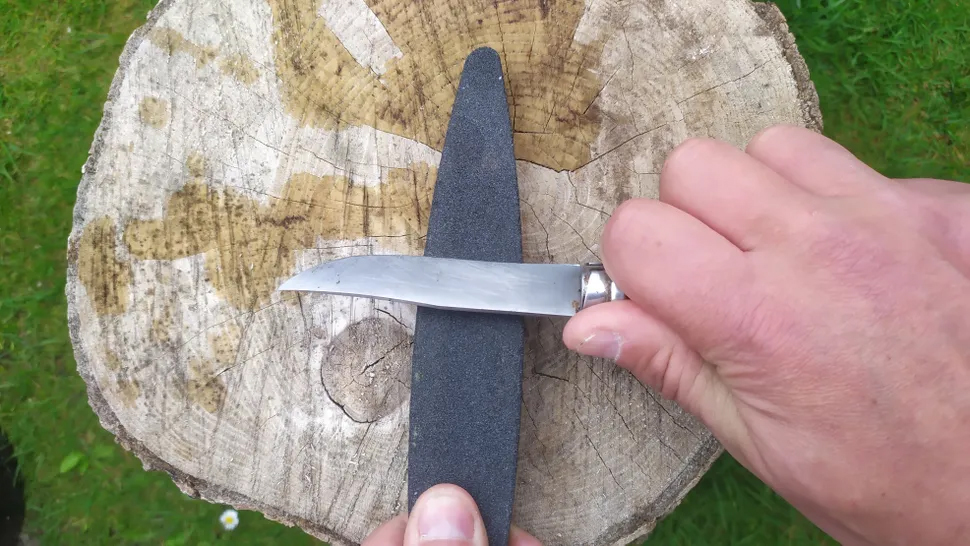
There are a few ways to sharpen your camping knife. You could use a whetting stone, a honing rod or even a pair of rocks. The precise method is too involved to go into detail here, so check out our step-by-step guides in the link above.
What is the best blade length for a camping knife?
There's a wide variety of blade sizes on offer when it comes to camping knives. All the products in this guide are between 5.7cm (2.25in) and 7.5cm (3in), which is ideal for everyday carry as it fits snugly into a pocket with no issues. This length of knife is also legal to carry in most places.
Shorter blades exist, and they're ideal for tasks like opening food cans, cutting craft materials or opening packages. Generally though, you'll want at least 2 inches of blade.
Longer blades aren't as ideal as everyday carry and, depending on when you are, can be illegal.
Advnture Newsletter
All the latest inspiration, tips and guides to help you plan your next Advnture!
An outdoors writer and editor, Matt Jones has been testing kit in the field for nearly a decade. Having worked for both the Ramblers and the Scouts, he knows one or two things about walking and camping, and loves all things adventure, particularly long-distance backpacking, wild camping and climbing mountains – especially in Wales. He’s based in Snowdonia and last year thru-hiked the Cambrian Way, which runs for 298 miles from Cardiff to Conwy, with a total ascent of 73,700 feet – that’s nearly 2½ times the height of Everest. Follow Matt on Instagram and Twitter.

